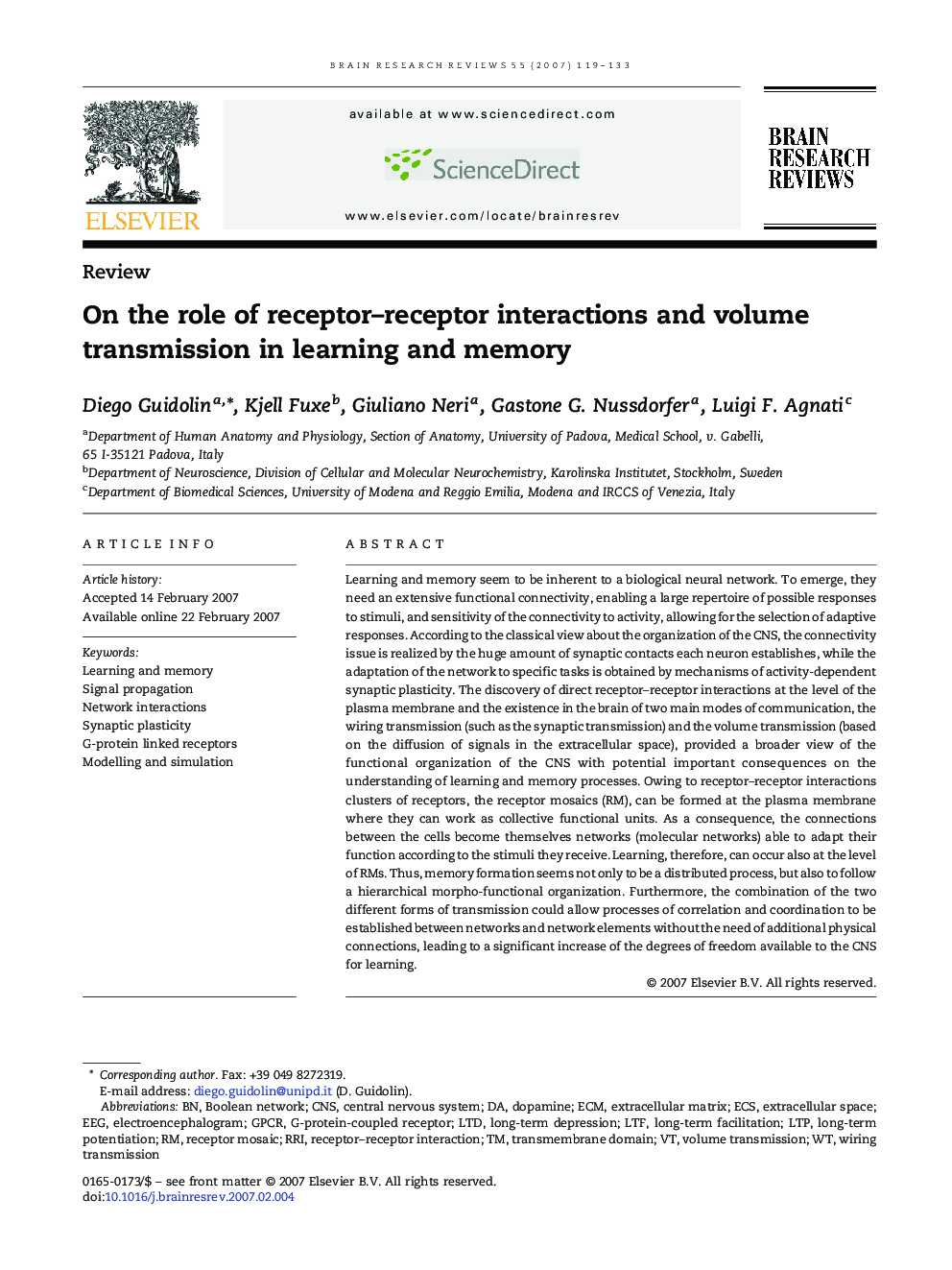| کد مقاله | کد نشریه | سال انتشار | مقاله انگلیسی | نسخه تمام متن |
|---|---|---|---|---|
| 4334068 | 1294772 | 2007 | 15 صفحه PDF | دانلود رایگان |
عنوان انگلیسی مقاله ISI
On the role of receptor-receptor interactions and volume transmission in learning and memory
دانلود مقاله + سفارش ترجمه
دانلود مقاله ISI انگلیسی
رایگان برای ایرانیان
کلمات کلیدی
RRINetwork interactionsGPCRECMLTFECs - EC هاG-protein-coupled receptor - G-پروتئین گیرندهlong-term depression - افسردگی طولانی مدتElectroencephalogram - الکتروانسفالوگرافیSignal propagation - انتشار سیگنالVolume transmission - انتقال حجمlong-term facilitation - تسهیل درازمدتlong-term potentiation - تقویت درازمدتLTP - تقویت طولانی مدت یا LTP transmembrane domain - دامنه فرابنفشCNS - دستگاه عصبی مرکزیDopamine - دوپامینcentral nervous system - سیستم عصبی مرکزیBoolean network - شبکه بولینextracellular space - فضای خارج سلولیExtracellular matrix - ماتریکس خارج سلولیLTD - محدودModelling and simulation - مدل سازی و شبیه سازیReceptor Mosaic - موزاییک گیرندهEEG - نوار مغزیSynaptic plasticity - پلاستیسیته سیناپسیLearning and memory - یادگیری و حافظه
موضوعات مرتبط
علوم زیستی و بیوفناوری
علم عصب شناسی
علوم اعصاب (عمومی)
پیش نمایش صفحه اول مقاله

چکیده انگلیسی
Learning and memory seem to be inherent to a biological neural network. To emerge, they need an extensive functional connectivity, enabling a large repertoire of possible responses to stimuli, and sensitivity of the connectivity to activity, allowing for the selection of adaptive responses. According to the classical view about the organization of the CNS, the connectivity issue is realized by the huge amount of synaptic contacts each neuron establishes, while the adaptation of the network to specific tasks is obtained by mechanisms of activity-dependent synaptic plasticity. The discovery of direct receptor-receptor interactions at the level of the plasma membrane and the existence in the brain of two main modes of communication, the wiring transmission (such as the synaptic transmission) and the volume transmission (based on the diffusion of signals in the extracellular space), provided a broader view of the functional organization of the CNS with potential important consequences on the understanding of learning and memory processes. Owing to receptor-receptor interactions clusters of receptors, the receptor mosaics (RM), can be formed at the plasma membrane where they can work as collective functional units. As a consequence, the connections between the cells become themselves networks (molecular networks) able to adapt their function according to the stimuli they receive. Learning, therefore, can occur also at the level of RMs. Thus, memory formation seems not only to be a distributed process, but also to follow a hierarchical morpho-functional organization. Furthermore, the combination of the two different forms of transmission could allow processes of correlation and coordination to be established between networks and network elements without the need of additional physical connections, leading to a significant increase of the degrees of freedom available to the CNS for learning.
ناشر
Database: Elsevier - ScienceDirect (ساینس دایرکت)
Journal: Brain Research Reviews - Volume 55, Issue 1, August 2007, Pages 119-133
Journal: Brain Research Reviews - Volume 55, Issue 1, August 2007, Pages 119-133
نویسندگان
Diego Guidolin, Kjell Fuxe, Giuliano Neri, Gastone G. Nussdorfer, Luigi F. Agnati,